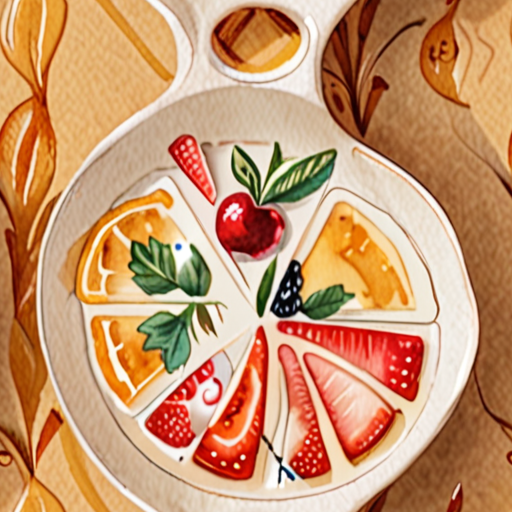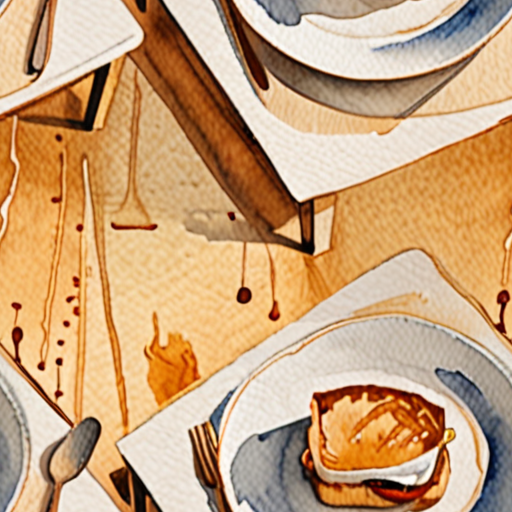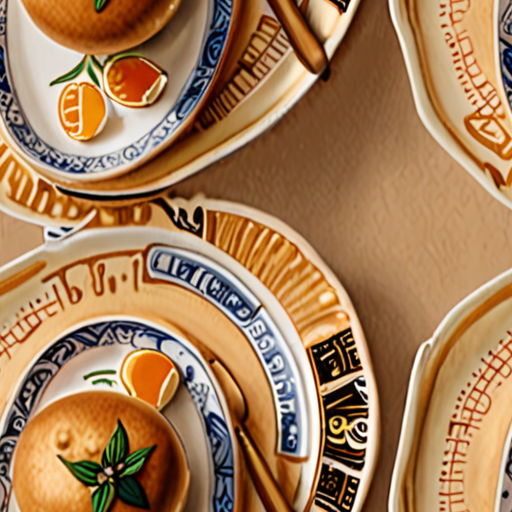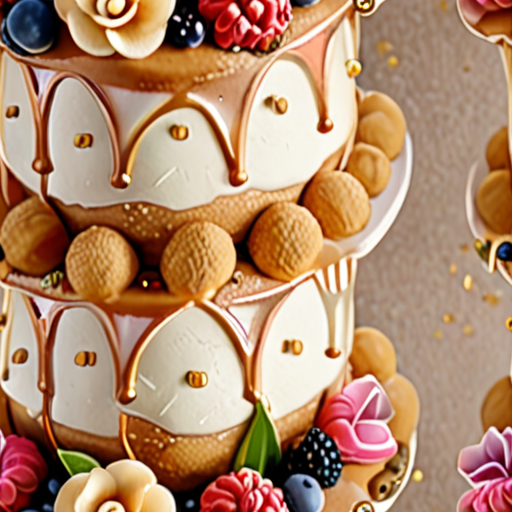When it comes to elevating your culinary creations, mastering plating techniques is essential for creating visually appealing dishes that tantalize the taste buds. Effective food plating involves a combination of artistry and science, requiring a deep understanding of the principles behind plating methods, as well as the ability to balance flavors, textures, and colors to create a harmonious dining experience.

The 5 Guidelines of Plating
We take pride in presenting our dishes in a visually appealing manner at Memories Restaurant.
-
Balance
A well-balanced plate has a harmonious distribution of colors, textures, and flavors. To achieve balance, consider the size, shape, and color of each component on the plate.
-
Contrast
Contrast adds visual interest to a dish by combining different elements such as colors, textures, and temperatures. Use contrasting elements to draw attention to specific components of the dish.
-
Harmony
Harmony refers to the overall aesthetic appeal of the plate. Consider the color palette, texture, and composition of the dish to create a cohesive look.
-
Emphasis
Emphasis draws attention to the main ingredient or feature of the dish. Use garnishes, sauces, or other elements to highlight the star of the show.
-
Alignment
Alignment refers to the arrangement of components on the plate. Balance and symmetry can be achieved by aligning elements in a way that creates visual harmony.
Three Popular Styles of Plating Food
We take pride in presenting our dishes in a visually appealing manner at Memories Restaurant.
- Classic Style
- Free Form Style
- Landscape Style
The classic style of plating involves arranging food in a symmetrical and balanced composition, often featuring a central element surrounded by complementary ingredients.
This style is commonly seen in fine dining restaurants and is often associated with traditional cuisine.
At Memories Restaurant, we strive to create a classic presentation that showcases the beauty of our dishes.
The free form style of plating is characterized by a more relaxed and organic approach, often featuring a mix of colors, textures, and shapes.
This style is perfect for casual dining and allows for creativity and experimentation with different ingredients and presentation techniques.
Our chefs at Memories Restaurant enjoy experimenting with the free form style to create unique and visually appealing dishes.
The landscape style of plating involves creating a design that resembles a landscape or a work of art, often featuring a combination of colors, textures, and shapes.
This style is commonly seen in modern and contemporary cuisine and requires a high level of creativity and skill to execute effectively.
At Memories Restaurant, we take inspiration from nature and art to create stunning landscape-style presentations that delight our customers.
Whether you prefer the classic, free form, or landscape style, we invite you to visit us at Memories Restaurant and experience the art of plating firsthand.

Types of Plating
We take pride in our culinary expertise at Memories Restaurant, and we’re excited to share with you the four primary types of plating.
- Buffet Style Plating
- Family Style Plating
- Individual Plating
- Plated Service
This type of plating involves presenting dishes in a buffet-style setting, allowing guests to serve themselves and choose their preferred portion sizes.
Family style plating is a popular method where dishes are served in large portions and shared among family members or groups of diners.
Individual plating involves serving each guest a separate, uniquely presented dish tailored to their personal preferences and dietary needs.
Plated service is a formal presentation style where each dish is carefully arranged and garnished to create a visually appealing meal.
At Memories Restaurant, we strive to offer our guests a memorable dining experience, and our expert chefs take great care in selecting the perfect plating technique to complement each dish.

The Rule of Three in Plating
To create visually appealing dishes, we employ the rule of three in plating, which involves dividing the plate into thirds.
- Imagine a clock face on your plate, with the 9 o’clock position marking the beginning of the bottom third.
- Place the main protein in the bottom third, between the 9 o’clock and 3 o’clock positions.
- The carbohydrate element goes in the top left third, spanning from the 9 o’clock to the 12 o’clock position.
- Finally, place the vegetable element in the top right third, extending from the 12 o’clock to the 3 o’clock position.
This balanced composition creates a harmonious visual arrangement, guiding the diner’s eye through the dish and emphasizing the flavors and textures of each component.
By applying the rule of three, our chefs can craft plates that are not only delicious but also Instagram-worthy, making Memories Restaurant a standout destination for foodies and photography enthusiasts alike.
We take pride in our commitment to culinary excellence and strive to innovate and adapt our techniques to stay ahead of the curve, always pushing the boundaries of what’s possible in the world of fine dining.
At Memories Restaurant, we’re passionate about sharing our love of food with our community, and we look forward to welcoming you to our table soon!
What Should You Typically Not Do When Plating?
When it comes to plating, there are several common mistakes that can detract from the overall presentation and dining experience.
- Mistake 1: Overcrowding the Plate
- Mistake 2: Ignoring Color and Texture
- Mistake 3: Failing to Consider the Height of the Dish
- Mistake 4: Neglecting Garnishes and Finishing Touches
- Mistake 5: Not Considering the Branding and Aesthetics of the Restaurant
One of the most common mistakes when plating is overcrowding the plate with too many ingredients. This can make the dish look cluttered and overwhelming, rather than visually appealing. To avoid this mistake, try to balance the composition of the plate by grouping similar ingredients together and leaving negative space between them.
Color and texture play a crucial role in making a dish visually appealing. When plating, consider the colors and textures of the ingredients and arrange them in a way that creates visual interest. For example, pair bright green vegetables with bold red sauces or crunchy textures with soft, fluffy grains.
The height of the dish can greatly impact its visual appeal. When plating, consider adding height to the dish by stacking ingredients or using garnishes. This can help draw the eye upwards and create a sense of drama and excitement.
Garnishes and finishing touches can elevate a dish from ordinary to extraordinary. When plating, don’t neglect to add a sprinkle of fresh herbs, a drizzle of sauce, or a sprinkle of microgreens to add color, texture, and flavor to the dish.
Finally, when plating, consider the branding and aesthetics of the restaurant. Use dishes, linens, and glassware that reflect the restaurant’s style and theme, and pay attention to the overall presentation of the dish to ensure it aligns with the restaurant’s brand identity.

The 3 Plate Method
The 3 plate method is a precision engineering technique used to manufacture flat surfaces.
- This process involves the sequential lapping of various pairs of surfaces until all three agree with each other.
- It is impossible for any one surface to be concave or convex while still agreeing with two other mutually agreeing surfaces.
- This ensures that the final product has a high degree of flatness and accuracy.
In the 3 plate method, the first pair of surfaces is lapped together to create a reference plane.
Then, the second pair of surfaces is lapped against the reference plane to create a second plane.
Finally, the third pair of surfaces is lapped against the second plane to create the final flat surface.
This process requires great care and attention to detail to ensure that the surfaces are properly aligned and lapped.
The 3 plate method is widely used in industries such as aerospace, automotive, and medical device manufacturing where precise flatness is critical.
By using this method, manufacturers can achieve high levels of accuracy and consistency in their products.
This is particularly important in applications where small deviations in flatness can have significant effects on the overall performance of the product.
For example, in aircraft manufacturing, small deviations in flatness can affect the aerodynamics of the aircraft and impact its safety and efficiency.
In summary, the 3 plate method is a reliable and effective technique for manufacturing flat surfaces with high precision and accuracy.
Conclusion
The 3 plate method is a valuable tool for manufacturers who require precise flatness in their products.
By understanding how this method works and its applications, we can appreciate the importance of precision engineering in various industries.
At Memories Restaurant, we understand the importance of precision and attention to detail in our cooking and presentation.
We strive to deliver high-quality dishes that meet the expectations of our customers.
Our commitment to excellence is reflected in our menu offerings and customer service.
We hope that you enjoy dining with us and experiencing the flavors and aromas of our cuisine.

0 Comments